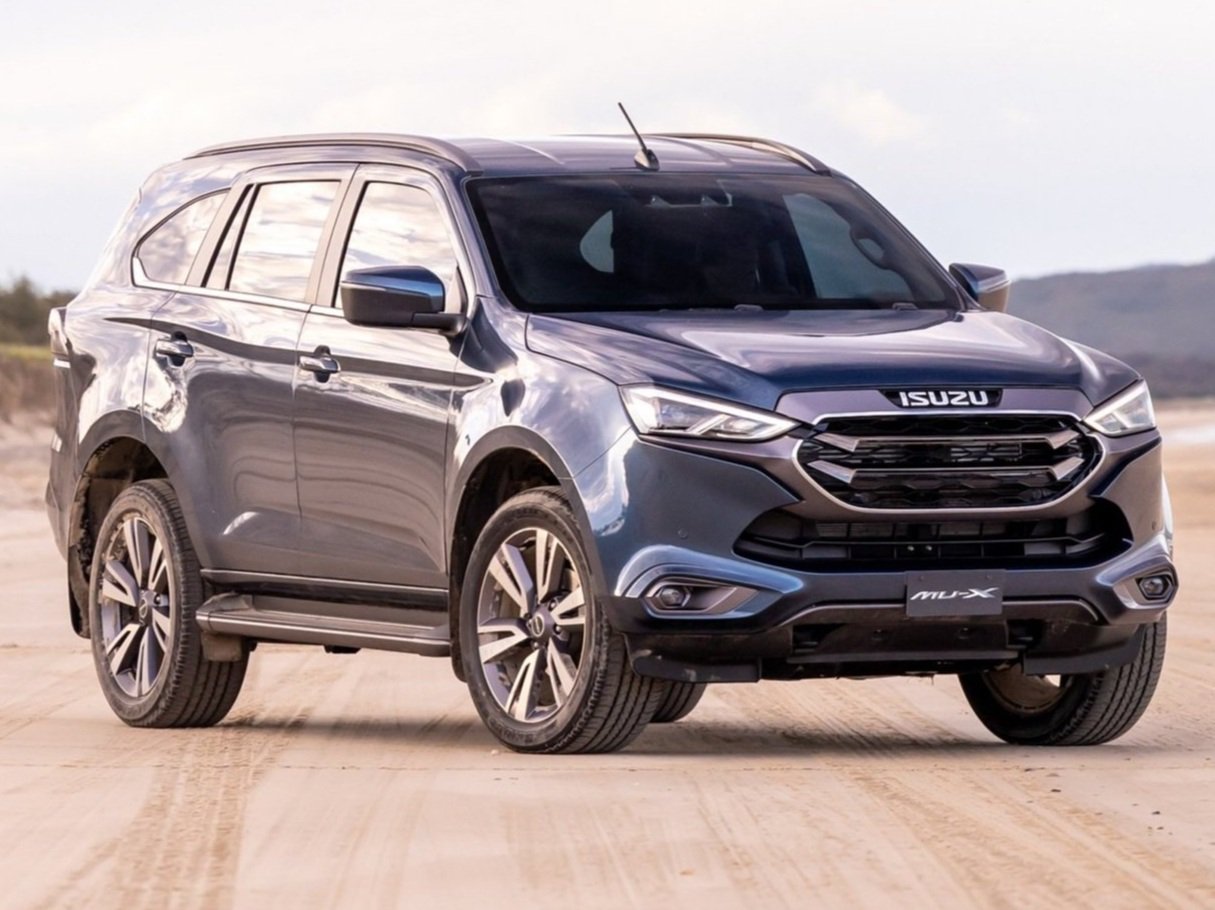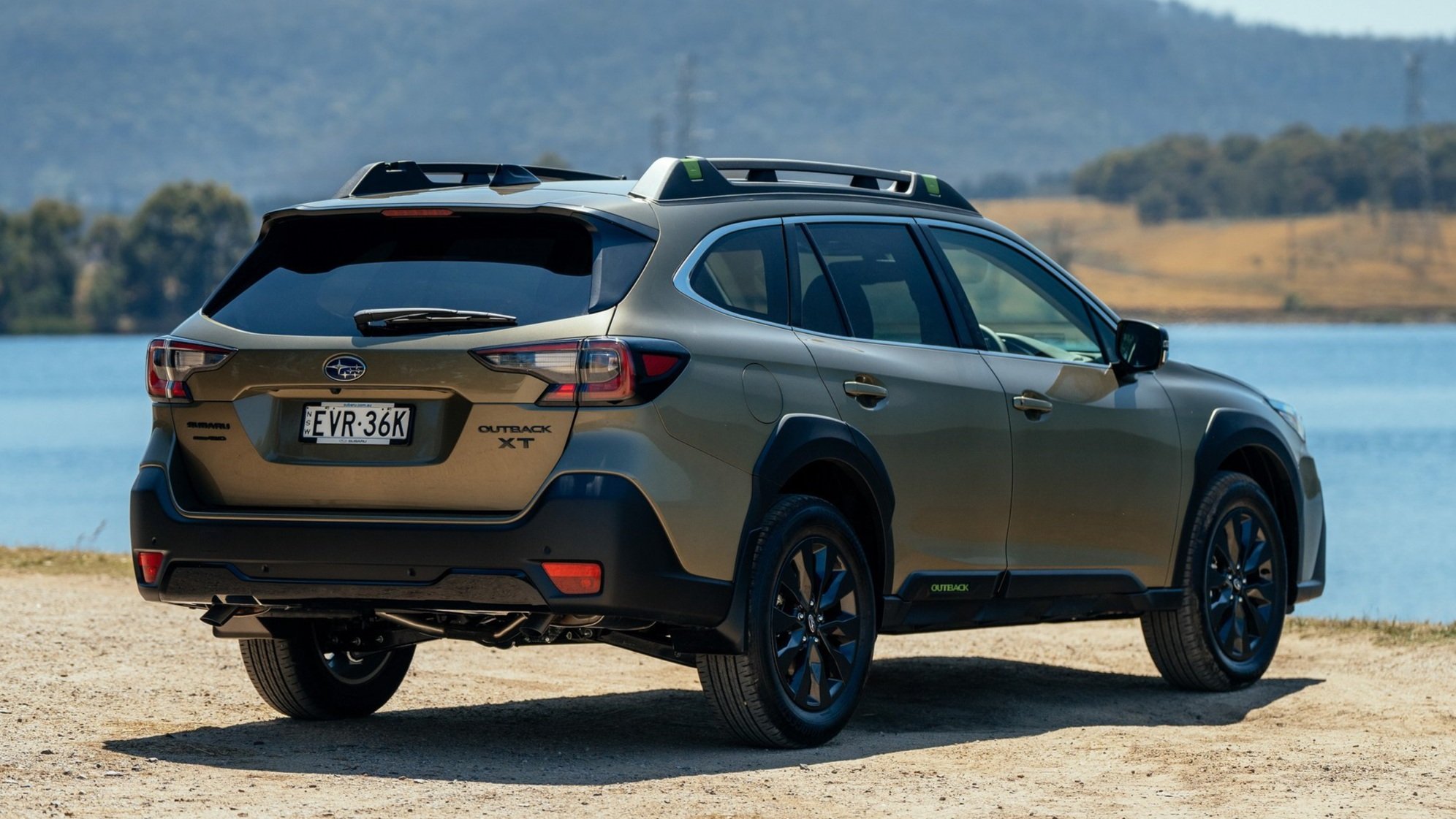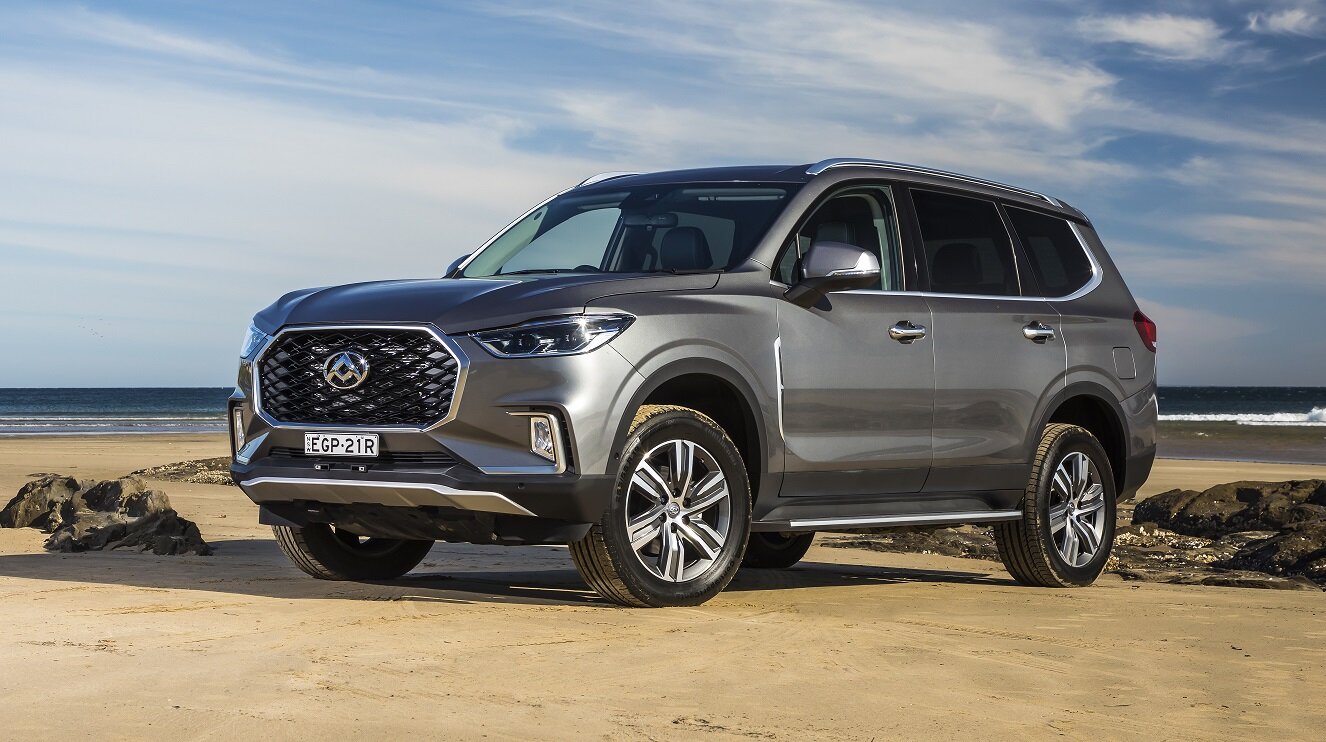Best Resale Value: Large 4WD SUV buyer’s guide
All new vehicles lose value over time, it’s a fact of life. This report will help you figure out today which large 7-seat 4X4 SUVs best hold their resale value, so you can make an informed choice tomorrow
Resale value can make you feel like you can never win, but when your old car is taking its last drives and you clearly need to upgrade, you have to face the music.
Everything loses value over time in the same way everything ages - that’s entropy for you. Large SUVs, while extremely popular in Australia as the go-to choice for large family mobility, they too depreciate.
This report aims to guide you through current resale value assessment so that shopping for a new car doesn’t have to be so daunting or overwhelming.
It’s hard shopping in the large 7-seat SUV segment with an extensive 22 different models all fighting for your attention, your money and there’s even two distinct flavours of 7-seaters to make the terrain more complex.
According to VFACTS (registration sales data provided by the car industry), the most sought-after large SUV model in 2023 was the Toyota Prado. That’s what the numbers show - but was it?
The large seven-seat SUV market is one of the fiercest and one of the most popular single segments in Australia, but there are 4-wheel-drive wagons, and then there’s strict SUVs which cannot go proper off-roading. The Prado falls into the former category, while the Toyota Kluger falls into the latter. But you wouldn’t know it looking at the data alone.
With total segment sales hitting 126,720 units for the year, from expensive and premium-approaching, to cheap and nasty, there is no shortage of variety here.
Let’s hand-pick four of the best-selling models and then compare them to four of the cheaper alternatives, investigating how their resale values look after five years of ownership. We’ll use the flagship variants of each to compare and to retain maximum consistency.
Specifically, we’ll look at the Toyota Prado, Ford Everest, Isuzu MU-X, and Mitsubishi Pajero Sport from the top tier, and then the LDV D90, SsangYong Rexton, Skoda Kodiaq, and Nissan Pathfinder from the lower tier.
To get started here are the new registration figures (sales) for these models during all of 2023 in Australia. These are not in order in terms of the best-selling models outright because the Subaru Outback is not available with seven seats, and we’ll skip the Toyota Kluger since we’re already covering the Prado.
(By the way, if you want to fight depreciation, click here >>)
Here’s a list of the four most popular 4WD-SUV models and their respective ‘sales’ for all of 2023 in Australia:
Toyota Prado: 20,710
Ford Everest: 15,071
Isuzu MU-X: 14,139
Mitsubishi Pajero Sport: 5547
Non 4-wheel-drive large SUVs that are in the second category include the Hyundai Santa Fe, Kia Sorento, Toyota Kluger, Mazda CX-9 and Subaru Outback. These vehicles are also significant in their popularity but are fundamentally different in their respective powertrain types and therefore represent a different purchasing decision for you, the consumer. Notionally, anyway.
It’s worth considering these vehicles if you need the combination of either on-demand or active all-wheel drive, generous luggage space in the boot and, quite importantly, seven seats.
You can find out more on the
These vehicles are not in the depreciation lists below, but will be part of their own list in due course.
BEST SELLING MODELS (of 2023)
Toyota Prado Kakadu
It’s been a favourite among Australians for decades, offering good all-round capability, practicality, and long-term reliability. In 2018 the top model was called the Kakadu, just like the current model.
Like the Fortuner, the Prado is based on a ladder-frame platform incorporating a live-axle rear end.
Prices started from $84,490 for the 2018 Kakadu, when new, and now the resale guide is between $55,100 and $60,400, leaving an average of $57,750.
That means it has lost $26,740 over five years, which equates to 31.64 per cent.
Ford Everest Titanium
Based on the same platform that underpins the Ford Ranger, only with coil springs at the back for a more comfortable ride and slightly better dynamics, the Everest offers great off-road capability and a decent in-car package.
In 2018, the top model was the Titanium 4x4 with the old 3.2-litre turbo-diesel five-cylinder engine.
Prices, back then, started from $74,701. Now, the resale guide is between $38,850 and $42,800, for an average of $40,825.
That means it has lost $33,876 in five years, or 45.34 per cent of its original value.
Isuzu MU-X LS-T
Isuzu has always been known for its dependability, ruggedness and user-friendly cabin.
It only offers two models, the D-Max and MU-X, and they both ride on the same platform and feature the same powertrain and running gear. It’s a very simple formula.
The main difference is the MU-X uses coil springs at the back (instead of leaf) for added comfort.
The top model now and in 2018 is and was the LS-T. Isuzu has been offering both rear-wheel drive and part-time 4x4 options. For this we’ll use the 4x4.
Back in 2018 prices started from $56,200. Now, the resale guide is between $36,250 and $40,050 for a used example, for an average of $38,150. That’s a loss of $18,050, or 32.11 per cent.
Mitsubishi Pajero Sport GLS
The Pajero Sport is Mitsubishi’s answer to the vehicles above, and is based on the Triton ute only with coil springs at the back.
Out of these four, it offers one of the best off-road packages, with the top spec version featuring diff locks and a proper centre differential so it can be driven in regular conditions with four-wheel drive engaged.
Today’s flagship is the GSR, priced from $62,440, but rewind back to 2018 and it was the GLS.
Prices started from $49,000 for the MY18. Now, the resale guide is between $30,000 and $33,250, for an average of $31,625. That’s a decline of $17,375, or 35.45 per cent.
Enquire about a new Mitsubishi Pajero Sport now: Click here >>
Here’s how much each respective model has lost in resale value over the last 5 years:
-$26,740 (-31%)
-$33,876 (-45%)
-$18,050 (-32%)
-$17,375 (-35%)
2018 Toyota Prado Kakadu 4x4
2018 Ford Everest Titanium 4x4
2018 Isuzu MU-X LS-T 4x4
2018 Mitsubishi Pajero Sport GLS 4x4
When judging for yourself where you think your money should go in future on certain models, what’s important to keep in mind is how much each respective vehicle costs the purchase outright.
So in the context of Everest, you’re paying a significant chunk of money for that vehicle - in fact, it’s the second most expensive model in that top four. The most expensive was the Prado Kakadu at $84K, so even though it holds its value the best, there’s a heavy penalty for this advantage which you don’t get to take advantage of for years into the future.
Compare taht to the MU-X which was cheaper than the Ford and Toyota, but several thousand dearer than the Mitsubishi and still ends up at roughly the saem resale price. So in the case of the MU-X, you’ve paid a premium which is reduced to almost nothing come resale time.
Whereas the Pajero Sport has always been the outright winner on value. Notionally, you spent the least, and it didn’t depreciate the most or the least. And it as no tangible deficits that make it a technical loser against the other vehicles - in fact it has been a more capable vehicle thanks to its superior powertrain.
I'll help you save thousands on a new large 4WD SUV here
Just fill in this form. No more car dealership rip-offs. Greater transparency. Less stress.
BUDGET SELLERS
There are some newcomers here that are more popular, such as the GWM Tank 300. But such models were not on sale in 2018 so we can’t use them to compare.
LDV D90 Luxe
The Chinese-made D90 has been offered in both rear- and four-wheel drive configurations, and in 2018, it was offered in just two trim levels; the Deluxe and Luxe. The Luxe is the flagship, equipped with a 2.0-litre turbo-diesel four-cylinder developing 165kW and 350Nm.
In 2018, prices started from $55,990 for the top Luxe version. Today, the resale guide is between $26,200 and $29,200, resulting in an average of $27,700. That equates to a loss of $28,290 after five years, or 50.52 per cent.
SsangYong Rexton Ultimate
This Korean brand has been building commercial vehicles for quite a while but it hasn’t been able to fully capture the attention of our market. Likely because its products haven't been able to meet the expectations of their respective segment.
In 2018 the top variant was the Ultimate, priced from $52,990. It featured a modest 2.2-litre turbo-diesel producing 133kW and 420Nm, connected to a seven-speed auto.
Today, the resale guide is between $21,750 and $24,350, for an average of $23,050. That means it has depreciated $29,940 in five years, which is 56.5 per cent of its initial value.
Skoda Kodiaq 140TDI
The Kodiaq is Skoda’s seven-seat SUV option, based on VW Group’s MQB platform like the Tiguan, Mk7 Golf, and Arteon. Diesel and petrol options were offered in 2018, with the 140TDI Sportline sitting at the top of the range.
Prices started from $56,790 when new in 2018, and now the resale guide is between $24,650 and $27,500, resulting in an average of $26,075. That’s a loss of $30,715, or 54 per cent.
Nissan Pathfinder Ti
Nissan’s previous-gen Pathfinder was subject to a major class-action lawsuit in America, with customers complaining about its CVT auto transmission. In Australia, the problems haven’t been as widely reported.
Being more of a crossover than a rugged SUV, the previous generation was reasonably popular among big families.
In 2018 the top Ti was priced from $66,390. Resale values span between $30,400 and $33,650 these days, for an average value of $32,025. That means it has lost $34,365 in five years (based on MY19 – no MY18 is listed). That’s a depreciation factor of 51.7 per cent.
Here’s how they depreciated over the last 5 years:
-$28,290 (-50%)
-$29,940 (-56%)
-$30,715 (-54%)
-$34,365 (-51%)
2018 LDV D90 Luxe 4x4
2019 SsangYong Rexton Ultimate 4x4
2018 Skoda Kodiaq 140TDI AWD
2019 Nissan Pathfinder Ti AWD
CONCLUSION: FIGHTING DEPRECIATION
As you can see, buying the cheap option doesn’t pay off in the long run. However, you often have to spend more initially to enjoy higher resale value in the future. This is not always the case but it is common in popular, mainstream segments like this one.
Depreciation is such an insidious, covert car-ownership cost. Here are some tips for kicking depreciation’s arse now and in the future…
You buy a new car. It depreciates. It’s like throwing a $50 bill out the window every few days. And you get nothing back and your car costs less.
The truly insidious thing about depreciation is the way it attacks covertly. You don’t pay it until the end, when your knuckles are white and you’re waiting for the sales dude to come back with his (markedly shit) trade-in offer. You know you’re about to get bent over, and the question is: ‘How hard?
If you had to pay your depreciation once a week, perhaps in cash, at the post office (like, if some arsehole made that was a law) new car sales would plummet over the perceived injustice.
Watch the full video report below to find out the very simple way of avoiding a resale ambush attack (by stealth)… Another option is to click the red button below and let AutoExpert’s crack team of dealer-negotiating assassins clear the room.


































The Hyundai Palisade is a big, comfortable holiday machine for growing families and offers excellent value, generous 8-seat SUV space, and practicality on par with LandCruiser - but it’s $30K more affordable.